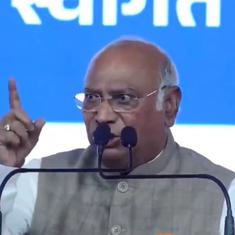One of the prominent instruments that has been introduced in the Hindustani pantheon of musical instruments is the violin. Although many have sought to prove its Indian origins by linking it to bowed instruments that have existed in India for centuries, there is no doubt that the violin that is presently used by Hindustani musicians is indeed of European origin. But it has been adapted to the requirements of Hindustani music, which is why several changes have been made to its playing technique and its tuning.
Over the past several decades, we have witnessed the evolution of different violin styles, all of which was possible due to the relentless efforts of path-breaking violinists. One of these was Damodar Keshav Datar, more popularly known as DK Datar. In the 21st episode of our series on public spaces named after Hindustani musicians, we pay a visit to the Padmashri Pandit DK Datar Chowk situated in Goregaon in Mumbai.
Datar was initially groomed by his eldest brother but he studied violin under Vighneshwar Shastri, who taught in BR Deodhar’s School of Indian Music. Deodhar mentions that Datar’s father Keshavrao Datar was a disciple of the music educationist and vocalist Vishnu Digambar Paluskar. But some sources – including a documentary on DK Datar – mention that he had trained under Paluskar’s guru Balkrishnabuwa Ichalkaranjikar.
Remembering the legendary Violin maestro, Padma Shri Pt #DKDatar ji (14 Oct 1932 - 10 Oct 2018), an exponent of the Gwalior gharana, the pioneer of the revolutionary "Gayaki Ang" style, influenced the generation of the instrumentalists to follow the suit...🙏🙏🙏#music #art pic.twitter.com/f06t5n99iV
— Kansen Club | कानसेन क्लब | Daily Happiness (@kansenclub) October 10, 2020
Datar’s maternal uncle was VD Paluskar’s son and renowned vocalist DV Paluskar. Thus, he came from a family that was steeped in music. In fact, Datar had the opportunity to learn from DV Paluskar and provided violin accompaniment for his performances.
Datar worked as violinist in the His Master’s Voice recording company for three years and later at the Films Division of India. He even played briefly for film music sessions. But he continued presenting solo recitals at public concerts regularly. His musical style incorporating not just the nuances of the Gwalior vocal style but also those of other vocal and instrumental gharanas continues to be followed by his disciples and grand-disciples.
The first track in today’s article features a Doordarshan recording in which he presents the raag Malkauns. He plays a madhya laya or medium tempo composition in the 16-matra Teentaal and a faster paced composition set to the 12-matra Ektaal. He follows this with a dhun inspired by the thumri-dadra vocal genres. Based on the raag Pahadi, the composition is set to the eight-matra Kaherva. Tabla accompaniment is provided by the senior tabla player Vibhav Nageshkar.
We conclude this episode with a track that includes short snippets of an interview with D.K. Datar in addition to a presentation of the raag Marubihag. He is accompanied by the well-known tabla player Yogesh Samsi. Violin support is provided by Datar’s disciple Milind Raikar.
One of India’s leading tabla players, Aneesh Pradhan is a widely recognised performer, teacher, composer and scholar of Hindustani music. Visit his website here.










